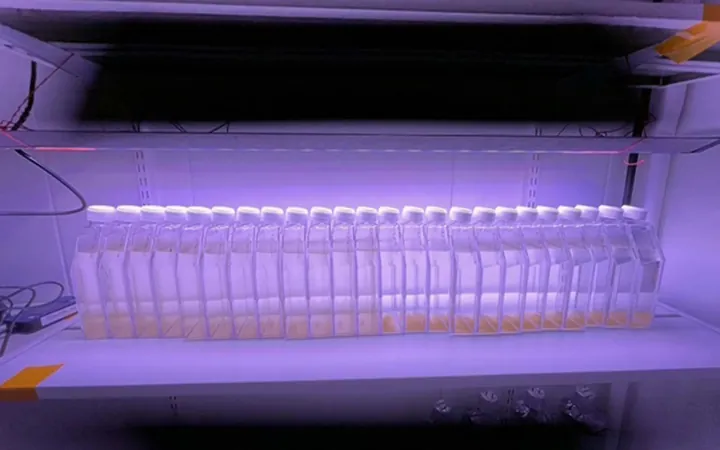
Deadly Duo: The Alarming Link Between Climate Change and Chemical Pollution Exposed!
2024-11-06
Author: Li
Groundbreaking Research Unveils Critical Interplay
In groundbreaking research, scientists are unveiling the critical and often overlooked interplay between climate change and chemical pollution, revealing dire consequences for both ecosystems and human health. Historically, studies have tended to analyze these two threats separately, neglecting the compounded effects they may have when they occur simultaneously.
Research Leadership
Sabrina Roth, a doctoral student at the University of Helsinki's Faculty of Biological and Environmental Sciences, leads the charge in this vital research. "Our findings indicate that the combined stresses of rising temperatures and chemical contaminants, such as antibiotics and pesticides, can severely disrupt ecosystems, impact food chains, and increase the risks posed to humans through contaminated water and food sources," Roth explains.
Methodology and Findings
Roth's research methodically investigates the responses of aquatic life to heat waves alongside everyday chemical pollutants. Starting with a specific phytoplankton species, she then expanded her experiments to observe mixed-species environments, detailing how a commonly used pesticide in agriculture interacts negatively with extreme heat conditions.
Advanced Modeling for Future Scenarios
Using advanced computer models, Roth illustrated potential future scenarios for populations in Sweden, analyzing how climate-induced extreme weather events can escalate exposure to harmful chemicals in water, air, and dietary sources. This approach underscores the pervasive effects of climate change and chemical pollution, reaching from microscopic organisms to the health of entire communities.
Impacts on Policy and Industry
Roth's thesis positions a powerful argument against the current practices of chemical safety testing, which typically fail to consider the ramifications of a shifting climate. This raises critical questions: How safe are chemicals deemed harmless under normal conditions when extreme weather events are factored in? Roth emphasizes that as our climate changes, regulatory frameworks must become more comprehensive and adept at addressing these synergistic risks.
Unexpected Consequences of Antibiotics
One major revelation from her study is the unexpected consequences of commonly used antibiotics, such as ciprofloxacin. Roth discovered that this widely prescribed antibiotic, often considered safe at low concentrations in Nordic environments, actually poses heightened risks to aquatic life during heat waves. “Phytoplankton, essential for aquatic ecosystems, suffer severe growth disruptions when exposed to both high temperatures and antibiotics,” she notes.
Dietary Habits and Exposure Risks
Furthermore, Roth's research delves into how dietary habits affect exposure to chemical pollutants. The study found that vegetarians might face higher exposure to pesticide residues in crops, while omnivores could be more vulnerable to polychlorinated biphenyls (PCBs) found in animal products. This highlights an often-overlooked dimension of personal choices in the context of climate change and chemical exposure.
Conclusion and Call to Action
With climate change rapidly altering our environment, understanding these interactions is vital. Roth's research not only calls for industry-wide changes but also emphasizes the need for public awareness of how our consumption patterns and industrial practices can compound the risks associated with climate change and chemical pollution.
In a world where environmental crises loom large, these findings could be instrumental in shaping future policies and public health strategies. Stay informed, as knowledge might be your best defense against this toxic combination!


 Brasil (PT)
Brasil (PT)
 Canada (EN)
Canada (EN)
 Chile (ES)
Chile (ES)
 España (ES)
España (ES)
 France (FR)
France (FR)
 Hong Kong (EN)
Hong Kong (EN)
 Italia (IT)
Italia (IT)
 日本 (JA)
日本 (JA)
 Magyarország (HU)
Magyarország (HU)
 Norge (NO)
Norge (NO)
 Polska (PL)
Polska (PL)
 Schweiz (DE)
Schweiz (DE)
 Singapore (EN)
Singapore (EN)
 Sverige (SV)
Sverige (SV)
 Suomi (FI)
Suomi (FI)
 Türkiye (TR)
Türkiye (TR)